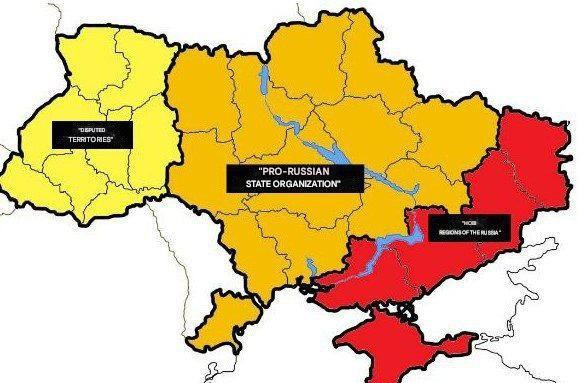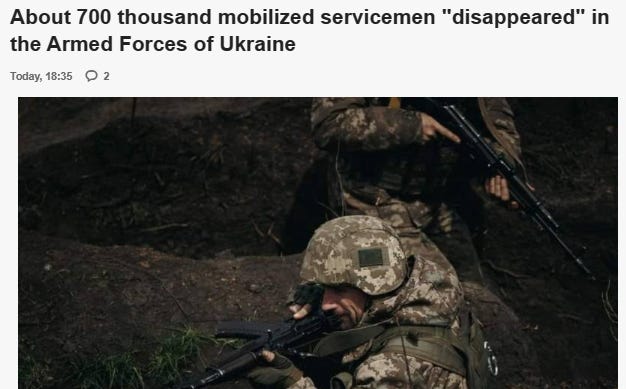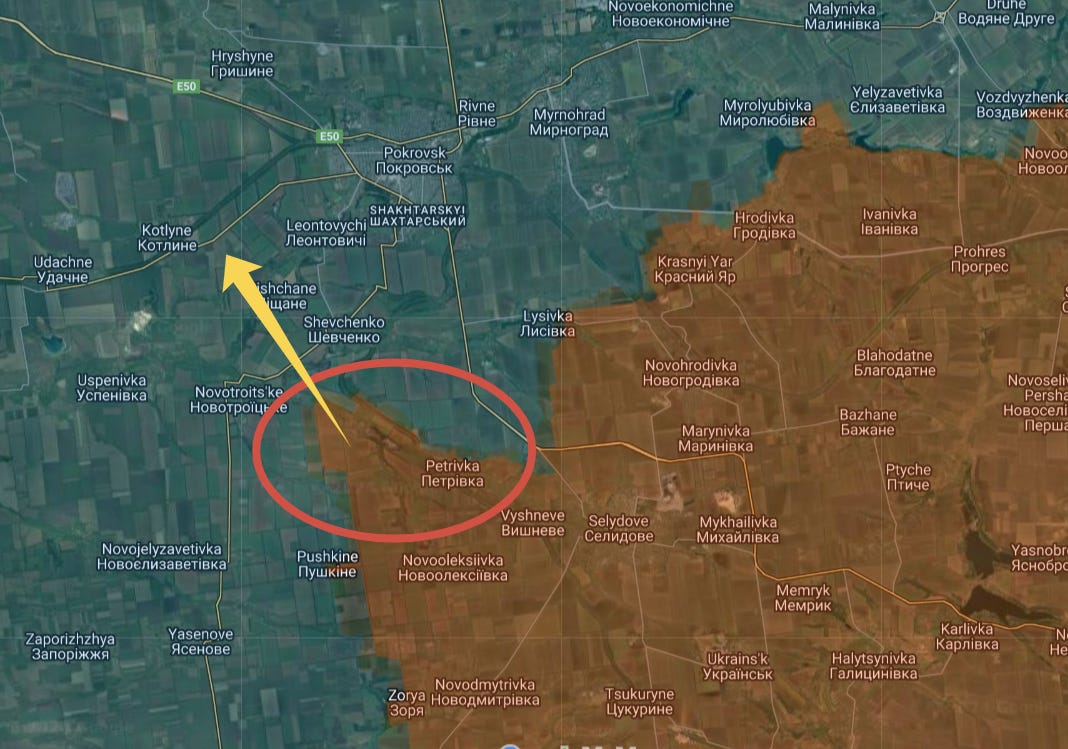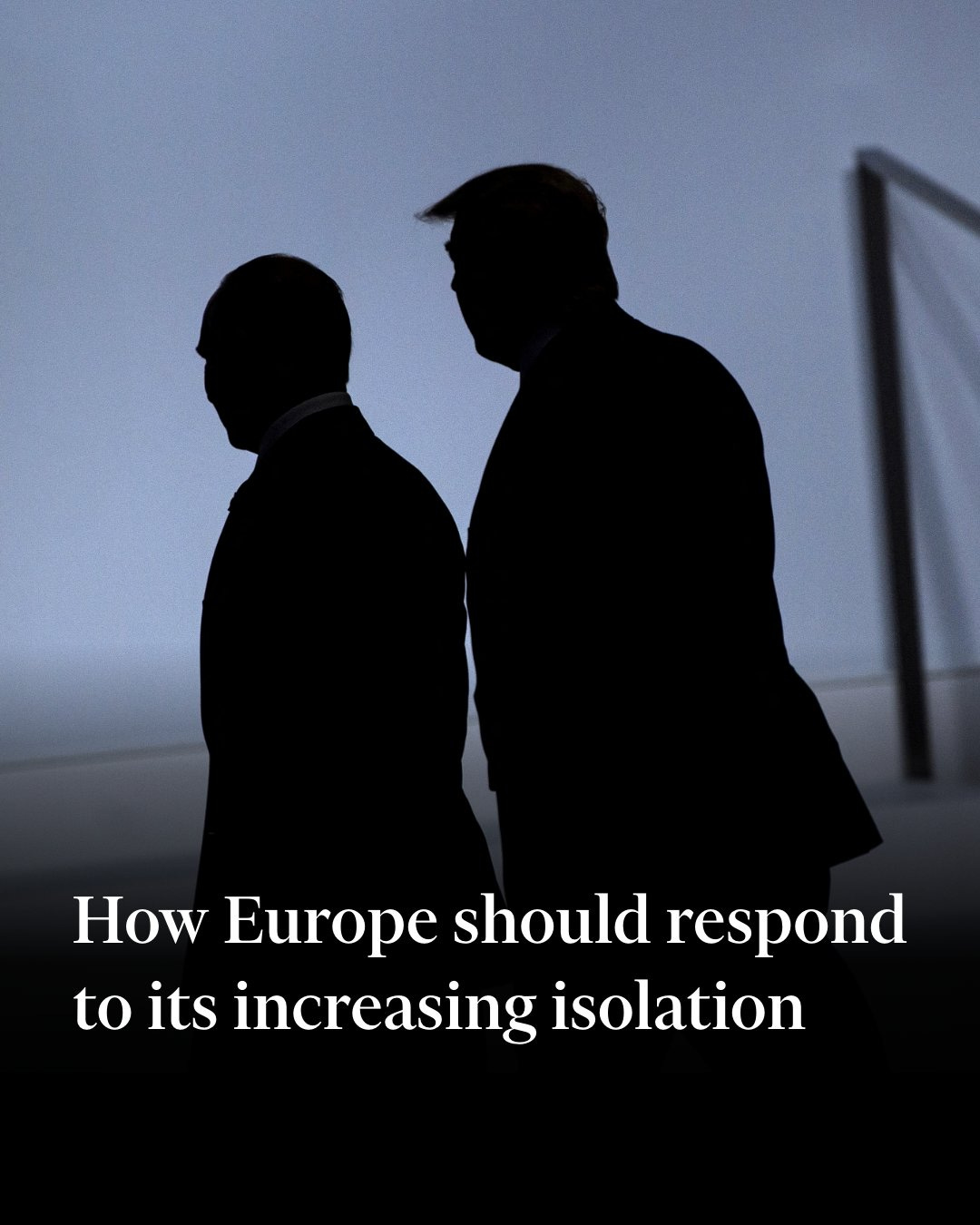SITREP 12/2/24: Europe's Bigs Scramble Across Globe for Last Minute Jockeying
Meanwhile, the Russian steamroller rolls on.
For the frst time since early 2022, German Chancellor Scholz arrived to Kiev by train to a series of bad-optics photo ops. Ostensibly his visit was announced as one centered on the same old “solidarity” drive for Ukraine. But reading between the lines, we quickly find the real hidden purpose of the jaunt.
Bild reports:
“The aim: to find out in a highly confidential conversation how president Zelensky assesses the situation. What he and his country are prepared to do.”
Summary for those who don’t want to read the full article:
‼️Scholz will try to find out at a meeting with Zelensky what the Ukrainian side is ready to do for the sake of peace, — Bild
▪️Analysts believe that ahead of the early Bundestag elections, the Chancellor is seeking to present herself as a leader ready to negotiate a peace agreement between Ukraine and Russia.
▪️This position is an order for him: if US President Donald Trump starts negotiations to end the war, as announced, Scholz intends to defend Ukraine's position, the publication writes.
RVvoenkor
The globalists who write Scholz’ marching orders have likely sent him to gauge Zelensky’s mood for capitulation, knowing that Trump may come pitching hard balls from the first inning. Scholz is likely sent as emergency reassurance to ensure Zelensky doesn’t give in to Trump’s opening volley of threats or offers. The MIC globalists want to at least make sure Russia gets as unfavorable a deal as possible, if it comes down to true negotiations.
Annalena Baerbock seemed to confirm this angle by simultaneously traveling to China to likewise apply negotiations pressures.
The head of the German Foreign Ministry said that she came to China to start the peace process in Ukraine, reports Tagesschau
▪️"To protect our own German and European security, it is now important to support Ukraine and to clearly engage in the peace process together with the international community, and that is why I am here in China today," Annalena Baerbock said in Beijing.
The elites want to save Ukraine, they just don’t want Russia to gain too much—particularly when it comes to geostrategically vital objectives like Odessa or maximal demilitarization terms.
Stoltenberg simultaneously applied pressure from his end:
Peace in Ukraine without territorial losses is now unrealistic, - former NATO Secretary General Stoltenberg
▪️The former NATO Secretary General suggested that Kyiv could agree to temporary territorial concessions in order to end the war.
▪️“If the ceasefire line means that Russia continues to control all the territories, this does not mean that Ukraine should give up these territories forever,” Stoltenberg said in an interview with Table.
▪️Earlier, Zelensky also made it clear that he considers it possible to end the war without returning all the territories. But in return, he wants an invitation to NATO
RVvoenkor
I wrote about this last year, that if Russia began winning too decisively the West would do anything, including giving up currently held territory, to stop the war to prevent Russia from seizing truly geostrategically vital targets like Odessa or even Kiev itself. Landlocking Ukraine would obviously be the biggest blow to NATO of all, as would creating a land corridor to Transnistria, which would allow the solving of that entire issue.
These figureheads are now getting desperate because it’s clear it has come to that: Ukraine has nothing to withstand Russia and a freeze is vital to ensure Russia is not allowed to go further.
The buzzards now circle round Zelensky, whispering in his ear, jockeying to eke out the best possible deal for both themselves and Ukraine—which generally means, whatever hurts Russia most.
The above new Economist article spells out these fears: essentially, that Trump may impose a ‘disastrous’ deal on Ukraine where Putin “achieves most of his war aims”.
Now Trump’s Ukraine envoy Kellogg’s plan reportedly sketched in April has been making the rounds which depicts a much clearer negotiating angle:
All things considered, it is relatively reasonable. But that doesn’t mean Russia would so much as deign to even entertain it, primarily because it does not even address deNazification and demilitarization, but at least conversely doesn’t offer NATO membership to Ukraine either. It’s simply that it’s reasonable compared to some of the other Western threat-laced pretentions masquerading as ‘offers’.
But as I said last time, these at least point to somewhat respectable opening overtures.
But alas, there’s more!
Now Putin-linked Russian billionaire tycoon Konstantin Malofeyev has shaken things up by announcing that Putin stands to abruptly reject these proposed opening offers:
Given that it’s said Malofeyev has Putin’s ear, his words carry weight. And not surprisingly, he refers back to Putin’s long-held requirement that any closure to the Ukrainian conflict must include a grander reconfiguration of the entire broader regional security architecture:
Donald Trump’s pledge to end Russia’s war in Ukraine is doomed to failure if the US president-elect does not involve broader talks on Moscow’s security concerns, an influential hardliner close to the Kremlin has warned.
This is a good sign: it means Putin could be holding to his word, and not slipping toward watering down Russia’s terms.
In fact, rather than cower, Malofeyev implies Putin could go even more hardline, startlingly suggesting that if Trump wants to play hardball Putin could nuke the future DMZ zone to prevent NATO troop deployment:
Malofeyev, however, argued that if the US did not agree to roll back its support for Ukraine, Russia could fire a tactical nuclear weapon. “There will be a radiation zone nobody will ever go into in our lifetime,” he said. “And the war will be over.”
Again he reiterates that Russia is looking to use Ukraine as the basis for an unprecedented new global reorganization of the Westphalian variety:
He said Moscow would only see it as a lasting condition for peace if Trump was willing to discuss other global flashpoints including the wars in the Middle East and Russia’s burgeoning alliance with China — and a US acknowledgment that Ukraine is part of the Kremlin’s core interests.
What does this consist of, exactly? It is a return to first principles, the cessation of political ‘games’ and the acknowledgment of geopolitical realities: such as that Great Powers have critical zones of influence and national security interests which must be respected; i.e. you don’t get to use Russia’s regional backyard as your personal sandbox, which would theoretically affect China and the China Sea issue as well. In other words, it’s an actual codification of a new and real “Rules Based Order” rather than the fictive one presently used by Western neocons to justify a lawless form of modern imperialism.
One other corollary is a new Kommersant article which claims that the Kremlin has been informing governors and lower echelon leaders that the SMO was expected to come to a conclusion in the future, and that it is important to amplify the ‘middle majority’ who wants the war to end, while marginalizing the voices of the maximalist ‘patriot’ camp, which will only be satisfied with the most extreme of achieved objectives:
Another important topic of the seminar, according to Kommersant's interlocutors, was working with the “image of victory” and public opinion regarding those returning from the SVO.
“The AP (Presidential Administration) assumes that there will be an end to the SWO (SMO) and that one should be prepared for it,” explains one of Kommersant's sources. The future results of the SWO should be regarded in society as a victory, although different social groups already perceive it differently: for “angry patriots” it means one thing, while for “liberals” it means quite another. Therefore, from the AP's point of view, it is necessary to focus on the “calm majority” that will be satisfied with the achievement of the goals outlined by the president (denazification and demilitarization of Ukraine), as well as the preservation of new territories for Russia. The AP believes that this majority should be preserved and expanded.
It should be noted that Kommersant is a bit of a left-leaning publication, though it is regarded as fairly legitimate, rather than a tabloid or total fifth column rag.
The above was received with some hostility by doomers and concern-trolls who imagine it as an inevitable Kremlin capitulation. However, if you look closely you’ll note it mentions deNazification and demilitarization and does not necessarily imply a reneging of Putin’s stated goals. However, one could argue it implies the Kremlin would be satisfied with just those goals, and not the wishful hidden ones like capturing Odessa, Kharkov, Kiev, all of Ukraine, etc., etc.
On that account, we had another speculative “report”—and for the record, the above Kommersant piece which quotes “anonymous sources” is not exactly definitive or corroborated, and should be used merely as food for thought for now. This one comes by way of “Ukrainian intel sources”:
Russia plans to divide Ukraine into three parts by 2045 and may voice this idea to Trump, Interfax-Ukraine reports, citing intelligence sources.
1. "New regions of Russia" - officially part of Russia. (red).
2. "Pro-Russian state entity" It is implied that there will be a pro-Russian government and Russian military bases. (orange).
3. "Disputed territories" (western part of Ukraine). The Kremlin wants to decide the future of these territories with Hungary, Poland and Romania.
The plan is good, but for some reason the implementation period is too long. Is the war planned until 2045? In addition, this orange "state entity" should not have any signs of statehood and sovereignty. But the fact that the name "Ukraine" is absent here gives hope for a correct understanding of the only possible option for ending the war - the liquidation of Ukraine as a state.
Take it with a grain of salt, of course, but if there’s any hint of truth to this, it could give us a hint to Putin’s long term thinking. For instance, he may accept not taking Kharkov and Odessa immediately, but as per the above, include them in a long term “Russification” plan to annex them politically and diplomatically in the future, rather than militarily.
Of course, no one knows how that could possibly work, or how the West would allow that. But also recall, this is simply a hypothetical if the war were to end soon. But we know the latter is not even likely, given the vast intractable differences between the sides at the moment. And Putin and co. have stated that if Russia must, it will continue prosecuting the war to the finish, and as consequence of this, territorial “realities” will drastically change. If Trump wants to keep pumping Ukraine full of weapons, Russia could continue indefinitely until everything is captured, rendering the above map moot.
Lastly, SVR director Naryshkin has not budged from the stance on negotiations in a new statement, reiterating that any settlement must be broader than just Ukraine:
Russia is against "freezing" the conflict according to the Korean scenario, the SVR director said
▪️Naryshkin also said that a peaceful settlement is possible in the event of an agreement that includes "peace for the entire European continent."
▪️"Russia categorically rejects any freezing of the conflict according to the Korean or any other option. We need a strong and long-term peace for many, many years to come. Moreover, this peace must be ensured first of all for us, Russia, the citizens of the Russian Federation. But this peace must also be ensured for the entire European continent. 1
▪️He also said that Russia is ready for peace talks in Ukraine on the terms that Putin announced in June. These terms include Ukraine handing over to Russia the entire territory of four regions - Donetsk, Luhansk, Kherson and Zaporizhia.
Again we turn to the reasons behind the fretful urgency behind all this peace chatter. The latest batch of mainstream articles continues giving us a grim look of the Ukrainian frontline. A sampling of the most revealing:
FT’s latest above starts off with this unpleasant admission:
More Ukrainian soldiers have deserted in the first 10 months of this year than in the previous two years of the war, highlighting Kyiv’s struggle to replenish its frontline ranks as Russia captures more territory in eastern Ukraine.
In a rare and uncharacteristic truth moment, they even acknowledge one of the many mutinies amongst the AFU:
In a standout case in late October, hundreds of infantry serving in Ukraine’s 123 Brigade abandoned their positions in the eastern town of Vuhledar. They returned to their homes in the Mykolayiv region where some staged a rare public protest, demanding more weapons and training.
The article gives us another update of ‘official’ troop counts:
Though Ukraine’s armed forces number about 1mn people, only around 350,000 take part in active duty. Worn-out combatants — including both infantry and assault soldiers — account for most cases of desertion, said an official with Ukraine’s general staff.
What’s bizarre about this latest admission is that in the past, the explanation was that Ukraine had about 350k combat troops, while the remaining 600-700k were merely in the rear, like logistics troops. But these kinds of troops are still considered active duty. This latest claims only 350k are active duty, which would make the remaining claimed “700k” to be some sort of inactive reserve that do not participate in the war at all, front or rear.
This makes little sense because tooth-to-tail ratios dictate that of all active duty troops, only a small percentage, like 10-30% should be frontline. If 350k are active duty, it would mean as few as 30-90k are frontline troops, which is impossible, or could be some screwup pointing to Ukraine’s troop figures being even more catastrophic than they let on.
“This problem is critical,” said Oleksandr Kovalenko, a Kyiv-based military analyst. “This is the third year of war, and this problem will only grow.”
“It is clear that now, frankly speaking, we have already squeezed the maximum out of our people,” said an officer with the 72nd Brigade, who noted that desertion was one of the main reasons Ukraine lost the town of Vuhledar in October.
The article reveals that one lawmaker in Ukraine even said the claimed “100,000” desertions could actually be as high as 200,000. Recall in the last report I showed the new Economist piece that declared Ukraine now as having at least 500,000 irreplaceable casualties—that’s both dead and maimed. Now add 200,000 desertions on top of that, and Ukraine has effectively lost 700,000 troops, and that’s just the minimal floor based on ‘official’ or Western sources liable to downplay true figures.
Interestingly, do you recall this headline from months ago?
A poignant snapshot from the article:
Another lawmaker in the article states Ukraine suffered a troop deficit of 4,000 men in September. Given that Ukraine has stated they recruit around 19,000 monthly “troops”, we can extrapolate this to be 23,000 hard losses per month, but this appears to include these desertions. 100k desertions for this year gives us 274 per day or ~8,300 per month. Subtract that from 23,000 and you get 14,700. Divide that by 30 and you get almost 500 hard losses per day. In other words, the AFU’s daily losses would be something like 250 dead, 250 maimed, and 274 deserted for ~770 daily ‘hard’ losses, which is 23,000 monthly losses—none of which counts lightly wounded casualties.
Lastly, we have:
The article begins in the darkest mood of all:
But the most shocking thing is this frank admission about the doomed Kursk operation:
Some questioned whether one of the operation’s initial goals - to divert Russian soldiers from Ukraine’s eastern front - had worked.
The orders now, they said, were to hang onto this small sliver of Russian territory until a new US president, with new policies, arrives in the White House at the end of January.
“The main task facing us is to hold the maximum territory until Trump’s inauguration and the start of negotiations,” Pavlo said. “In order to exchange it for something later. No-one knows what.”
So now they come around to openly admitting the Kursk operation was about nothing more than a desperate last ditch attempt to trade back some territory in the negotiations they’re so certain are coming.
Hilariously one of the Ukrainian troops on the Kursk front throws cold water on the North Korean nonsense:
And despite weeks of reports suggesting that as many as 10,000 North Korean troops have been sent to Kursk to join the Russian counter-offensive, the soldiers we’ve been in contact have yet to encounter them.
“I haven’t seen or heard anything about Koreans, alive or dead,” Vadym responded when we asked about the reports.
Interestingly, the Ukrainians have cottoned-on to Zelensky’s desperate antics:
“Good idea but bad implementation,” says Myroslav, a marine officer who served in Krynky and is now in Kursk.
“Media effect, but no military result.”
Now Russian forces continue making major breakthroughs in Velyka Novosilka, already nearly enveloping the major stronghold which stood for three years:
The Kurakhove front fares no better for the AFU. Wide view:
Not only have Russian forces likewise nearly enveloped it from the north by advancing up to Stari Terny:
But they’ve advanced through Kurakhove itself to the center of the city.
There was progress elsewhere like Toretsk, but also toward Pokrovsk itself. After concentrating on the south they’ve resumed marching toward Pokrovsk to begin enveloping its flanks as well by capturing the village of Zhovte:
One of the more interesting advancements of the past few days was where Russian forces forded the Oskol River, establishing a beachhead on the other side, just north of Kupyansk:
This is one of the first successful such river crossings and not only could threaten Kupyansk’s rear if the beachhead is expanded, but also forebodes future such operations on other fronts.
And with that mentioned, the latest rumor from the Ukrainian side:
Chairman of the Federation Council of the Russian Federation Matvienko said today that the chances of negotiations with Ukraine in 2025 are higher than the rejection of them.
At the same time, the Ukrainian media predict a Russian offensive in the Zaporizhia and now Kherson regions, on any of the dates starting from December 5. In the Zaporizhia region, Ukrainian speakers say that the Ukrainian Armed Forces are actively preparing for the upcoming battles. Our side does not comment in any way.
Most have reacted with skepticism to the amphibious op across the Dnieper mentioned, but it is certainly interesting given that Russia has now made its first larger scale successful cross-river beachhead up in Kupyansk.
Also, one interesting food for thought: The long awaited Zaporozhye offensive has been said to potentially target Zaporozhye city itself, so that Putin can capture all four new Russian regions, including their capital cities. This is particularly the case with potential negotiations coming up in the future: Russia my seek to hold off talks until the required regions are all back under Russian control. Recall that Kherson city would have to likewise be captured, and so it’s not out of the realm of possibility that Russia could seek to recapture it. It’s impossible to tell without further information about the state of the Dnieper river. Some have suggested winter would be a perfect time to cross the dried out river bed since its loamy soft-soil bottom would be hardened under freezing temps, potentially allowing easy passage across in some sections.
But thus far, there is no indication Russia has made any large buildups near the river to give this theory any real credibility. Buildups on the Zaporozhye line, on the other hand, have been reported on by Ukrainian sources for a long time now.
—
Lastly, it’s interesting how Europe is finally belatedly learning that it was in fact them becoming isolated all this time, not Russia:
European powers used to carve up other countries. Now that fate threatens us, starting perhaps with Donald Trump handing much of Ukraine to Russia in a ‘peace deal’ on which Europeans are barely consulted
This comes as Kaja Kallas likewise sounded alarm that—contrary to all European logic!—Russian influence is now growing worldwide:
In time, virtually the entire fraudulent myth the West constructed about both itself and Russia will come tumbling down like a rotten edifice.
Your support is invaluable. If you enjoyed the read, I would greatly appreciate if you subscribed to a monthly/yearly pledge to support my work, so that I may continue providing you with detailed, incisive reports like this one.
Alternatively, you can tip here: buymeacoffee.com/Simplicius






























Germany to China : If you do not stop your trade with Russia we will sanction you.
China : And if we stop?
Germany : We will still sanction you, but using different excuses.
That about sums up their whole trip to China.
First of all, this "Trump peace attempt" is a complete fraud and scam. Is everyone blind? Trump was the first man to start supplying weapons to Ukraine, and now he claims that in a "peace state" he would continue the supply, and in a "war state," he would escalate it further. He is the President of the USA, not a friend of Russia.
Nearly 1 million Russian men have died in the last three years of this civil war. (For the American readers: Ukrainian people are Russians too—they are not a completely different people. I know this might shock you, given the brainwashing of your mainstream media.)
Meanwhile, nearly all aspects of Russian culture have been systematically erased in Ukraine. Statues honoring those who fell in the Great Patriotic War (1941–1945) have been burned. Priests have been beaten. Now, every Ukrainian is being taught to hate Russia.
The only viable peace option—one that does not involve the total surrender and dissolution of Russia, as well as the disgusting mockery of our fallen soldiers—is clear: Russia should take back all territories except Lviv. Western countries can take Lviv if they wish, but only after it is reduced to the stone age by an endless bombardment of FABs and 152mm shells